E-Sports Arenas: Are Video Games the Next Great Urban Entertainment Anchor in Real Estate?
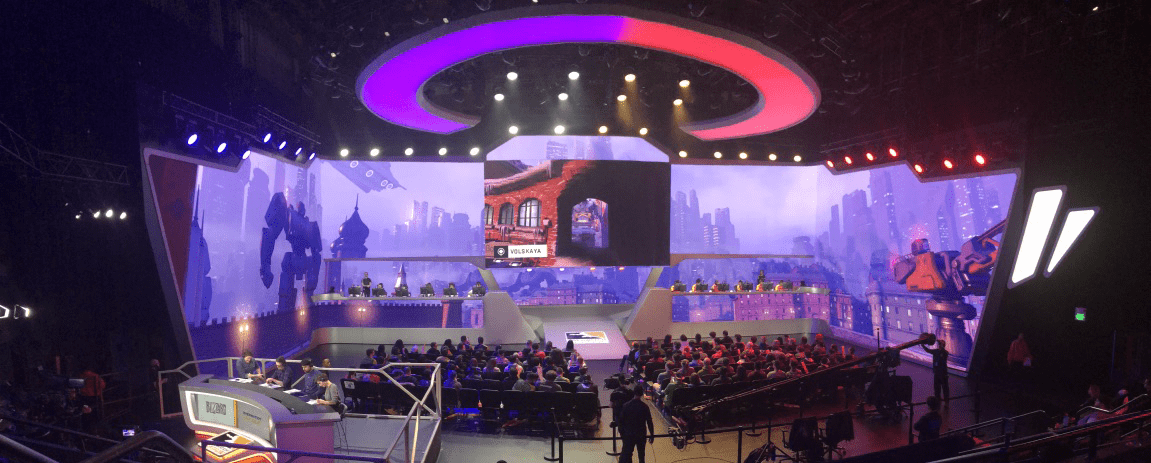
Electronic sports, or “e-sports,” is a popular global pastime that has experienced massive increases in consumer interest in recent years. Revenue from e-sports has expanded at a CAGR of 36% since 2014 and is forecast to continue to post double-digit growth through 2021, exceeding a billion dollars in revenue that year.[1] Viewership has also demonstrated rapid growth, expanding at a 13% CAGR since 2014,[2] with forecasts for over half a billion e-sports viewers by sometime in 2020 or 2021. To date, only a small number of dedicated e-sports arenas exist, the majority of which are existing buildings that were repurposed into the new e-sports arena format. As the e-sports market continues to expand, additional demand for e-sports arenas is likely, presenting global development and adaptive reuse opportunities—particularly for arenas anchoring existing and new, large, mixed-use entertainment districts featuring complementary retail, hospitality, and multifamily product.
What Is E-Sports?
Electronic sports, or “e-sports,” is a broad category covering competitive multiplayer video games played by professional video game players, for spectators’ enjoyment during regular season and tournament league games. E-sports teams are generally organized based on game title and geographic region. These teams practice regularly, have one or more coaches, and are supported by sponsorship, prize money, traditional sports owners, and other revenue streams. The live e-sports games, moderated by professional e-sports commentators and overseen by referees, are frequently broadcast simultaneously via multiple channels, including game publisher websites and live video streaming platforms such as Twitch and YouTube, in addition to offering in-person viewing experiences at various large and small venues. Globally, millions of viewers watch hundreds of millions of hours of e-sports games and billions of hours of additional commentary by players and other influencers in the e-sports space.
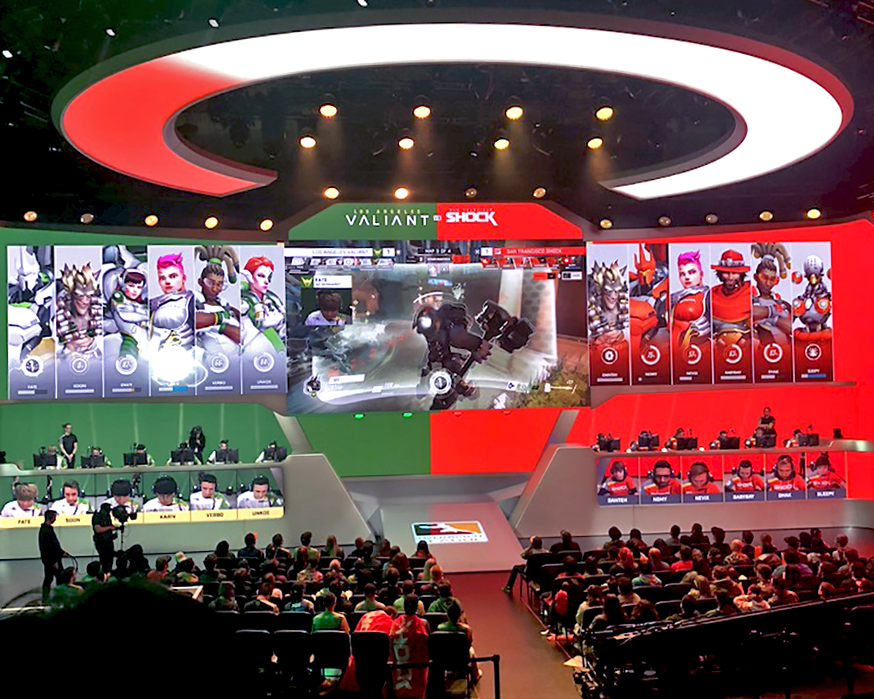
Overwatch League Stage 2 Week 2 Match 2/28/18
Los Angeles Valiant vs. San Francisco Shock
Blizzard Arena, Burbank, California
E-Sports by the Numbers
E-sports is a popular and rapidly growing entertainment option, reaching 335 million viewers in 2017, almost evenly split between occasional viewers (57%) and enthusiasts (43%), according to data tracked by Newzoo.[3] Viewership has increased by double-digit percentages in recent years, and is forecast to exceed half a billion viewers by 2021.
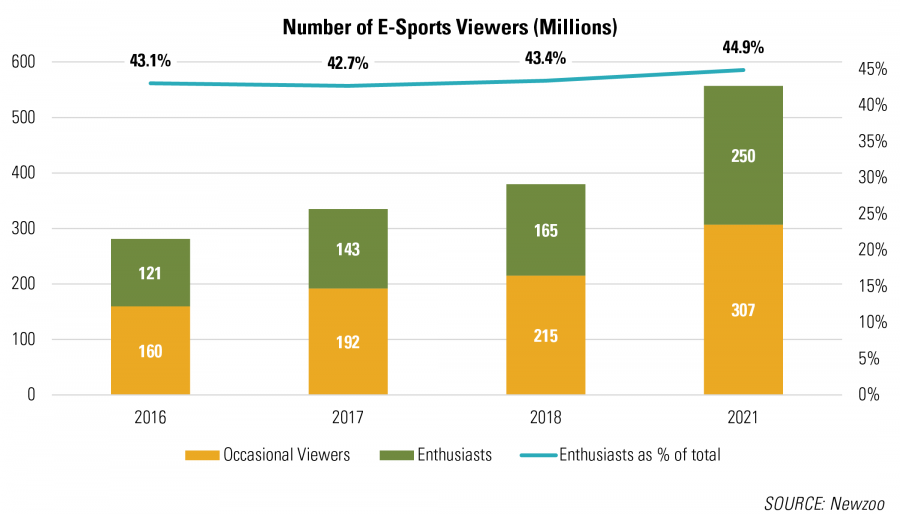
Last year fans watched billions of hours of e-sports games and additional content online, with nearly one billion hours of gameplay watched across the top five games alone.
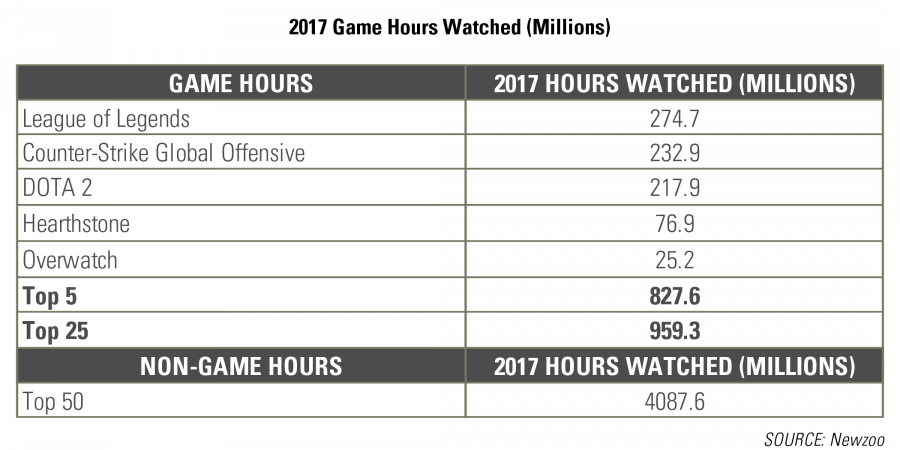
E-sports is a profitable endeavor, with revenues exceeding half a billion dollars across the industry in 2017. Similar to viewership, revenue is increasing at a double-digit pace yearly, and the industry is forecast to exceed a billion dollars in revenue by 2020.[4]
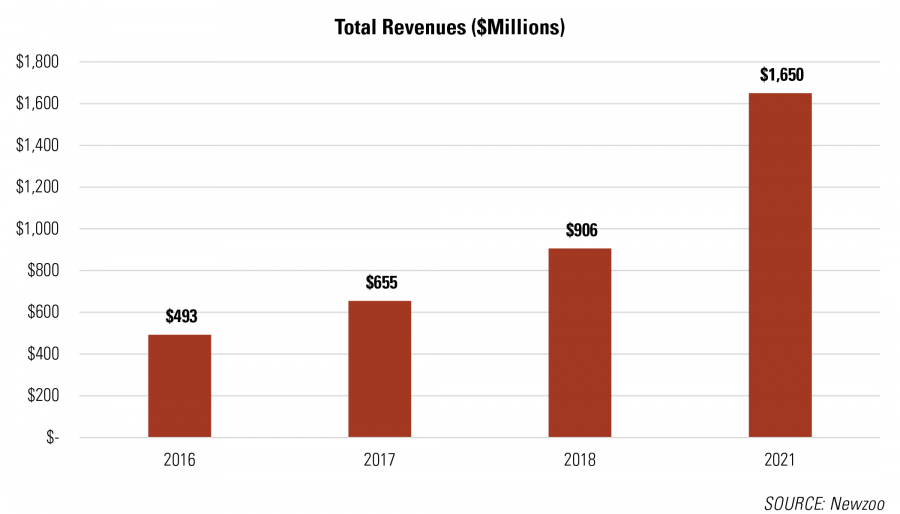
Revenue originates from a variety of sources but is primarily driven by sponsorship, with additional revenue streams from advertising, media rights, publisher fees, and merchandise and tickets.
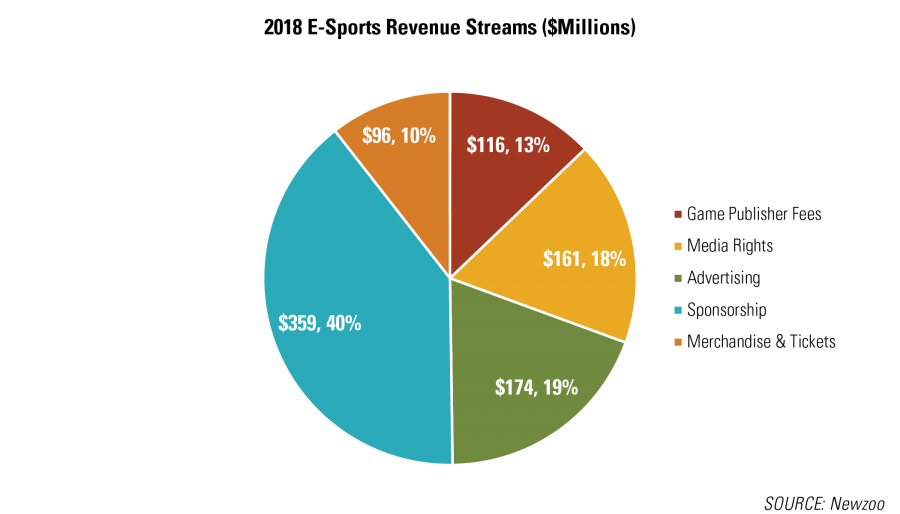
With thousands of tournaments and thousands more players, prize pool revenue exceeded $100 million for the first time in 2017 according to data tracked by EsportsEarnings. Although the average pool of earnings per player may seem small, the most elite players can walk away with significant cash prizes. In 2017, Kuro “KuroKy” Takhasom earned $2.1 million playing Dota 2, helping his team, Team Liquid, achieve a win at The International 7 tournament. Takhasom’s entire take home for 2017 totaled over $3.5 million.[5]

Although not yet comparable in size to traditional sports, e-sports awareness is on the rise as teams and fan bases for different game titles become increasingly established across North America, Europe, and Asia. By December 2017, approximately 18 months after the Activision Blizzard game Overwatch was released on May 24, 2016, nine teams in eight cities across six states represented the United States in the Overwatch League, competing both among themselves and against teams based in the UK, China, and South Korea.[6] The rapid rise and acceptance of Overwatch League mirrors the e-sports industry as a whole, which has become increasingly mainstream over the last decade globally and in the U.S. With leagues and tournaments for dozens of different video game titles, e-sports has moved from a niche entertainment option to a viable sports category, even earning a separate coverage segment on espn.com along with sports such as the NFL, NBA, Soccer, Tennis, NASCAR, and others.
E-Sports Can Drive Adaptive Reuse in Real Estate
In the near term, e-sports presents a strong opportunity to drive adaptive reuse, as many types of real estate can be repurposed into e-sports venues. Indeed, to date the majority of dedicated e-sports arenas have been converted into gaming venues from a wide range of real estate product types, including casinos (Esports Arena Las Vegas), sound stages (Blizzard Arena), and office buildings (NA LCS Battle Arena). Other real estate product types, such as cinemas or warehouses, can easily be converted into an e-sports venue given the straightforward requirements necessary to operate an e-sports arena. The decline of traditional retail at the expense of online and experiential retail creates a potential for e-sports to repurpose vacant mall and other retail sites into dedicated e-sports arenas.
The requirements for a venue to act as an e-sports arena are manageable and primarily consist of a fast, reliable, wired internet connection for the players, wi-fi for guests, ceilings high enough to install multiple large video screens for the audience, seating space for the guests, dedicated areas for concessions and merchandise, and space for training and practice, pre-game warm ups, one-on-one sessions with coaches, team storage, and other team uses.
Given the global popularity, current low fan density, and fragmented fan base among dozens of game platforms and tournaments, most regular season games are only able to attract a live audience numbering in the hundreds or low thousands of attendees. Thus, smaller venues with a capacity from 500 to 5,000 and ranging in size from 15,000 to 30,000 square feet are ideal in the near term to host regular season games, allowing operators to maximize arena use and revenue-generation opportunities while minimizing periods when the venue is idle, as evidenced by regular season games at venues such as the Blizzard Arena in Burbank and the NA LCS Battle Arena in West Los Angeles, which sell out regularly, even with dozens of games a week.[7][8]
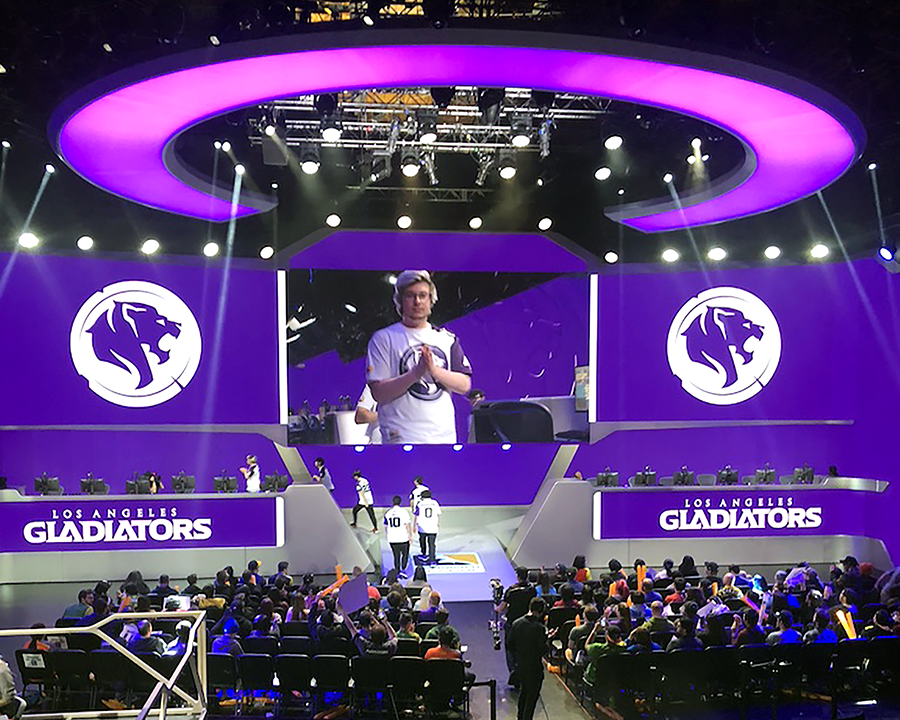
Overwatch League Stage 2 Week 2 Match 2/28/18
Los Angeles Gladiators vs. Shanghai Dragons
Blizzard Arena, Burbank, California
E-Sports Creates New Development Opportunities in Real Estate
There are a handful of ground-up development projects executed and under construction globally as dedicated e-sports arenas. These projects tend to be larger in scale, from 60,000 to over 100,000 square feet with a capacity for tens of thousands of attendees, such as the Chongqing Zhongxian E-Sports Stadium in Zhongxian, China, which seats 20,000 and opened in late 2017.[9] As current e-sports require minimal playing space for the team, a large court area is not needed. Furthermore, spectators are viewing all of the game on various video screens. In smaller venues the audience is located close to the players, with large video screens on multiple walls providing ample viewing area for fans. For championship matches, which draw in tens of thousands of attendees from around the world and currently are hosted in traditional sports stadiums, the preferred seating location shifts from ground level to the highest elevation seating tier, which provides eye-level screen views for the maximum number of fans. The shift of the best view seats to these “nose-bleed” sections is unique to e-sports and impacts the design and construction of new e-sports venues, which place an emphasis on high-level seating with better sight lines to stadium video screens.
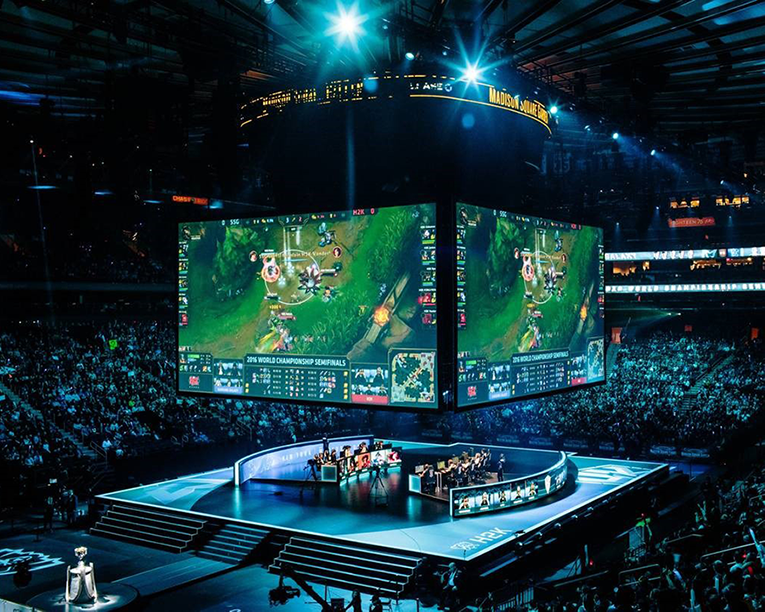
League of Legends World Championship Semifinal Match 10/22/16
Madison Square Garden, New York City, New York
Given the importance of viewing screens in e-sports, future e-sports stadiums will feature significantly more video displays to broadcast current games and replays, dispersed throughout the arena including hallways, concession and merchandise areas, and bathrooms, along with displays embedded on the exterior glass curtain walls of the venue. It is even possible that virtual reality (VR) headsets will be given out to fans, much like 3D glasses are given out in movie theaters, to ensure that all spectators in attendance have the best view possible. Individual viewing screens also allow fans to choose which player, team, or stage view they wish to display, personalizing the experience for the viewer.
New ground-up e-sports arena development may also include space dedicated to post-production activities. The quantity of video and advertising material generated from a single e-sports match is significant. While games are broadcast live, instant replay clips, match highlight videos, and other material are created for viewing and advertising purposes. Dedicated square footage for a post-production team of editors, commentators, and a marketing team is a natural extension of arena development, which already includes the main game stage and dedicated training and practice areas for home and visiting teams. Given the minimal size and operational requirements for video post-production, it is logical for new arena development to consider dedicated space for post-production teams, in addition to space carved out for more traditional complementary uses, such as media boxes for journalists.
E-Sports as a Real Estate Entertainment Hub
E-sports fans cross the age, gender, and ethnic spectrum, and are as dedicated and enthusiastic as traditional sports fans, following teams and players closely, wearing jerseys and face paint to games, queueing up for autographs, and dressing up their children and/or pets in team apparel. Some e-sports games are designed for shorter matches running only a couple of hours, with certain sports, such as Overwatch League, offering multiple back-to-back games in an arena in a single day. Other game formats can run six or eight hours, or even longer. The result of either format is a fan base that lingers for extended periods of time at the arena, and it is not uncommon for fans to leave their seats and meander throughout the venue.
From a real estate perspective, the long engagement period at e-sports events creates exciting opportunities for consumer engagement. As discussed in a recent RCLCO Advisory article, sports venues can operate as anchors for dynamic urban mixed-use developments. Stadium-anchored billion-dollar mixed-use developments across the U.S. include the Arena District in Columbus, Ohio; The Power and Light District in Kansas City, Missouri; and District Detroit in Detroit.[10] Similar to traditional sports venues, an e-sports arena can act as the anchor of a broader mixed-use district, serving as a catalyst for significant additional real estate development proximate to the sports arena.
Potential complementary uses surrounding an e-sports arena include retail (primarily dining), hospitality for visiting teams and fans, and multifamily for households that wish to live near an arena. A larger entertainment and sports park, with controlled attendance via a wristband, smartphone app, or other mechanism, allows guests to enter and leave the arena, and by extension the larger entertainment park, at will, segmenting and increasing revenue opportunities for all the tenants at the park. In addition to the uses mentioned above, other activities, such as a live-music venue with local or national bands playing before, during, or after an e-sports game, could successfully be co-located near an e-sports arena. A movie theater could offer another entertainment option for fans as they wait for their team to play. A movie theater could also play e-sports highlights, replays, or even entire games from prior tournaments and playoffs, maintaining fan engagement and providing additional food, beverage, and merchandise opportunities. E-sports venues can even program space for casual (non-professional) players within the broader arena or entertainment district.
Augmented Reality and the Future of E-Sports
To date the majority of e-sports is comprised of players seated in a row in front of computers, playing a multiplayer video game. As technology improves, the line between traditional and electronic sports will continue to blur. Already we are seeing new, augmented reality-sports (“AR-sports”), such as Hado,[11] where players wearing AR headsets and wristband-based controls go through physical motions with digital sports equipment. Globally there are 18 Hado Arena centers on three continents, including a U.S. location in Hawaii. Such AR-sports have features of traditional sports, such as a defined court or playing field, and features of e-sports, such as virtual game equipment and the dependence on video screens to capture all of the game play. Future e-sports arenas should be designed with enough flexibility to accommodate the evolution of the sport, as AR-sports require more field space for game play and both traditional and AR e-sports give rise to new, different game formats. Regardless of the format of game play, e-sports is a popular and growing entertainment option, and arenas hosting e-sports events will provide real estate development and adaptive reuse opportunities for years to come.

Article and research prepared by Adam Ducker, Managing Director, and Taylor Neiman, Senior Associate.
References
[1] https://www.statista.com/statistics/490522/global-esports-market-revenue/
[2] https://www.statista.com/statistics/490480/global-esports-audience-size-viewer-type/
[3] Newzoo 2018 Esports Market Report
[4] https://www.statista.com/statistics/490522/global-esports-market-revenue/
[5] https://dotesports.com/business/news/top-earning-esports-players-21870#list-1
[6] SuperData 2017 Esports Market Brief
[7] https://esports.blizzard.com/en-us/blizzard-arena/los-angeles
[8] https://www.lolesports.com/en_US/
[9] http://www.scmp.com/lifestyle/article/2133582/inside-worlds-first-purpose-built-e-sports-stadium-china-hong-kong
[10] https://www.nytimes.com/2018/01/19/business/sports-arena-development.html
[11] http://meleap.com/hado/shop/
Image Sources
1st and 2nd photographs courtesy Taylor Neiman, RCLCO
3rd photograph courtesy Wall Street Journal
4th photograph courtesy Tokyo Otaku Mode News
Disclaimer: Reasonable efforts have been made to ensure that the data contained in this Advisory reflect accurate and timely information, and the data is believed to be reliable and comprehensive. The Advisory is based on estimates, assumptions, and other information developed by RCLCO from its independent research effort and general knowledge of the industry. This Advisory contains opinions that represent our view of reasonable expectations at this particular time, but our opinions are not offered as predictions or assurances that particular events will occur.
Related Articles
Speak to One of Our Real Estate Advisors Today
We take a strategic, data-driven approach to solving your real estate problems.
Contact Us